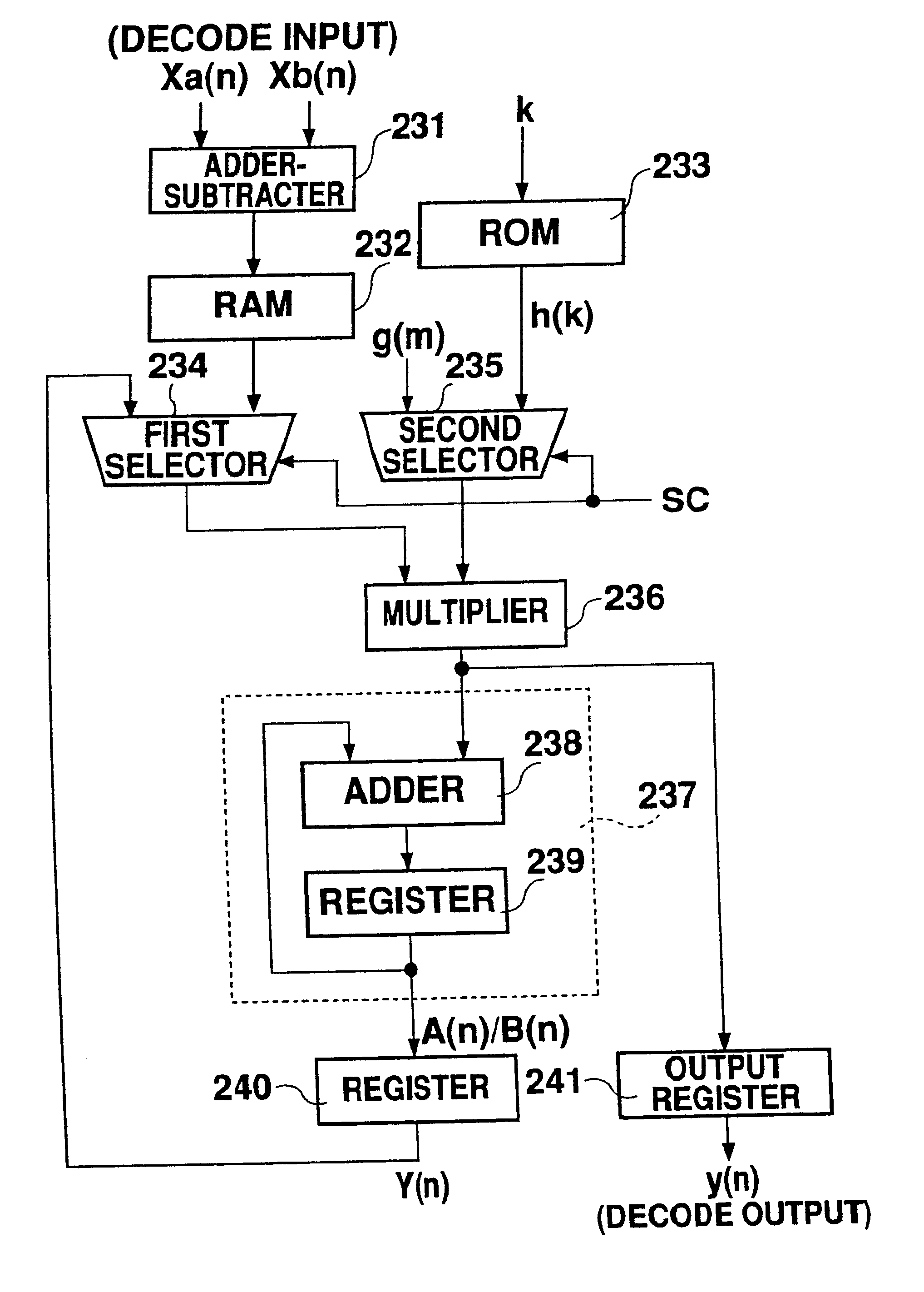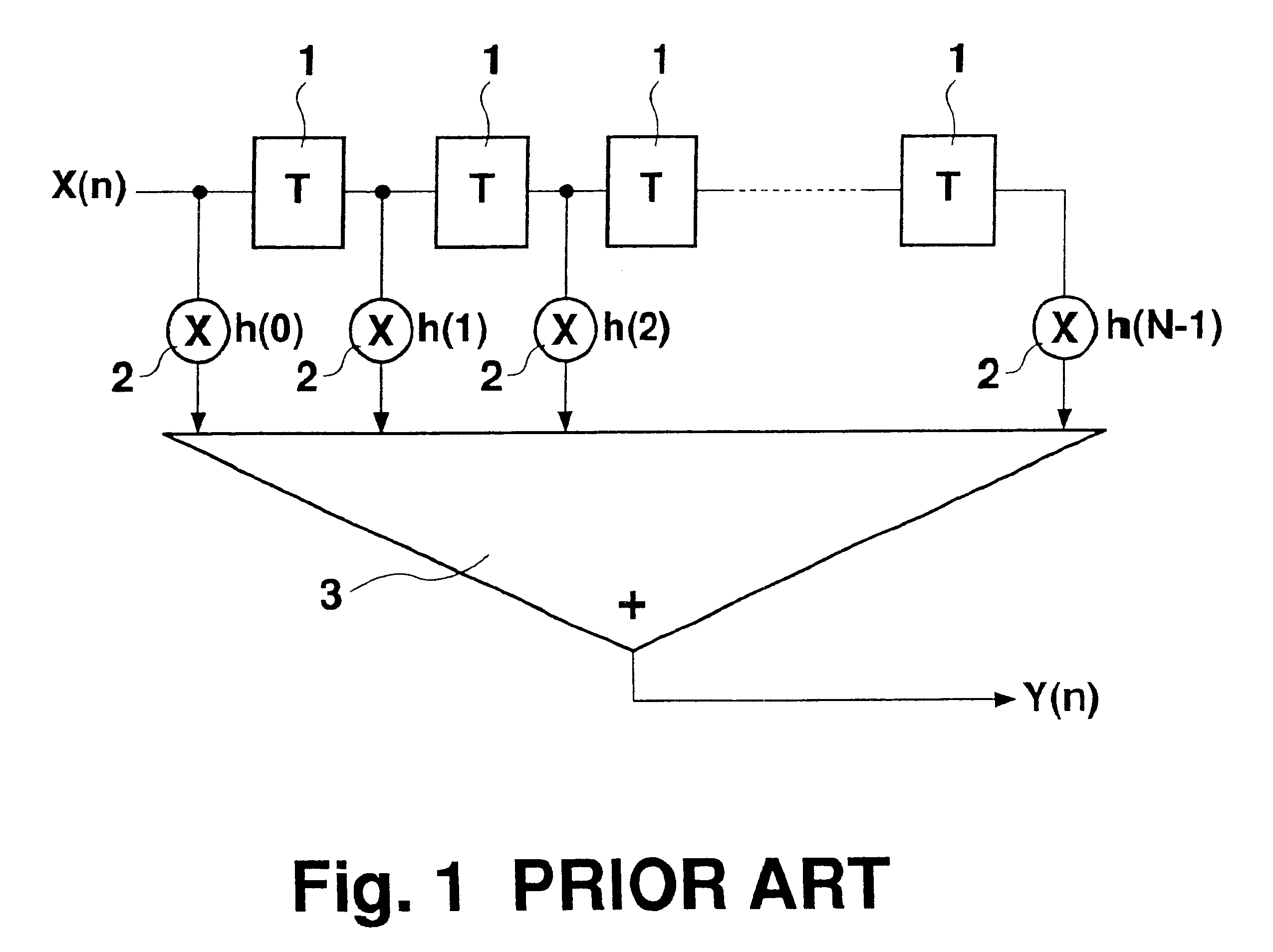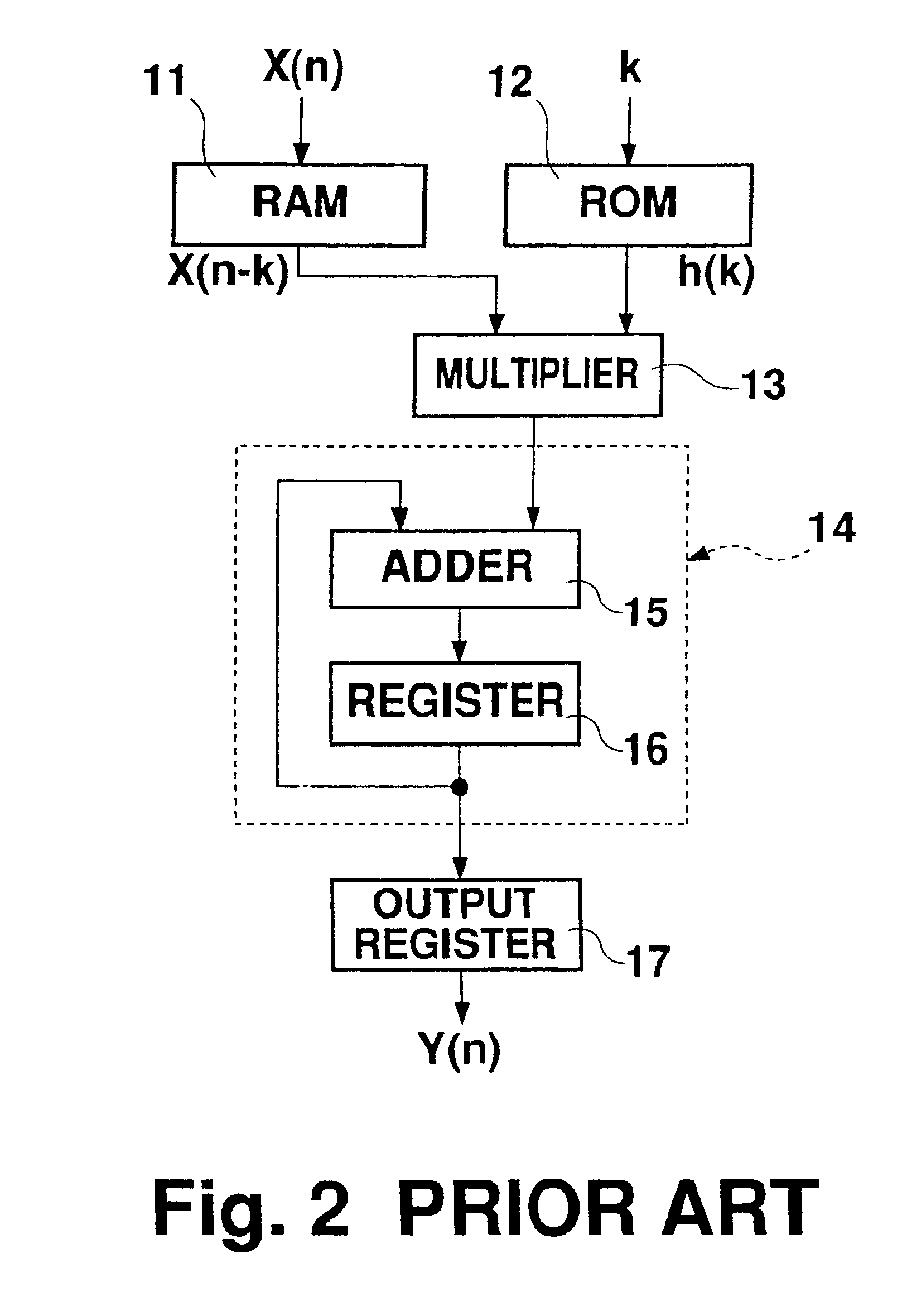Digital filters
a filter and digital technology, applied in the field of digital filters, can solve the problems of large circuit size, difficult to reduce the overall circuit size, and large circuit size, and achieve the effect of reducing the overall circuit siz
- Summary
- Abstract
- Description
- Claims
- Application Information
AI Technical Summary
Problems solved by technology
Method used
Image
Examples
first embodiment
[First Embodiment]
FIG. 5 is a block diagram showing a digital filter configured according to a first embodiment of the present invention.
RAM 41, connected to a second selector 54 which will be described below, stores time-series data which has been input to it from the second selector 54 for a predetermined period. Each data stored in the RAM 41 is sequentially read out for the arithmetic processing step. From a ROM 42, in which a plurality of filter coefficients h(k) have previously been stored, a step-specific filter coefficient h(k) with a value of k incrementing step by step is read out repeatedly, where k corresponds to the k given in the above-mentioned equations (9) through (12). A multiplier 43, connected to the RAM 41 and the ROM 42, multiplies the data read from the RAM 41 by the filter coefficient h(k) read from the ROM 42. An accumulator 44 consisting of an adder 45 and a register 46 is connected to the multiplier 43. The accumulator 44 accumulates the product of each mu...
second embodiment
[Second Embodiment]
FIG. 8 is a block diagram showing a digital filter configured in accordance with a second embodiment of the present invention.
A digital filter according to the second embodiment allows the parallel input of data Xa(n) and Xb(n) when operating as the synthesis filter. In the second embodiment, a pair of selectors 47a and 47b arranged in parallel replace the first selector 47 of the digital filter shown in FIG. 5. These selectors are designed to operate as follows. One selector 47a selects either the accumulation data supplied from the accumulator 44 or the input data Xa(n) and supplies the selected data to the first register 48. The other selector 47b selects the accumulation data supplied from the accumulator 44 or the input data Xb(n) and supplies the selected data to the second register 49. With the exception of a pair of the registers 47a and 47b, the structure and operation of the digital filter in the second embodiment corresponds to that in the first embodim...
third embodiment
[Third Embodiment]
FIG. 9 is a block diagram showing a digital filter configured in accordance with a third embodiment of the present invention.
A RAM 131, connected to a multiplier 135 which is explained below, stores for a given period the attenuated input data x(n) which has been input to it from the multiplier 135. Each data stored in the RAM 131 is sequentially read and output to the multiplier 135 when subjected to a further arithmetic processing step. From a ROM 132, in which a plurality of filter coefficients h(k) have previously been stored, a step-specific filter coefficient h(k) with a value of k incrementing step by step is read out repeatedly, where k corresponds to the k given in the above-mentioned equations (9) and (10). A first selector 133, connected to the encode input and the RAM 131, selects and outputs either time-series input data X(n) or the attenuated input data x(n) read from the RAM 131. A second selector 134, connected to the attenuation input and the ROM 3...
PUM
 Login to View More
Login to View More Abstract
Description
Claims
Application Information
 Login to View More
Login to View More - R&D
- Intellectual Property
- Life Sciences
- Materials
- Tech Scout
- Unparalleled Data Quality
- Higher Quality Content
- 60% Fewer Hallucinations
Browse by: Latest US Patents, China's latest patents, Technical Efficacy Thesaurus, Application Domain, Technology Topic, Popular Technical Reports.
© 2025 PatSnap. All rights reserved.Legal|Privacy policy|Modern Slavery Act Transparency Statement|Sitemap|About US| Contact US: help@patsnap.com



